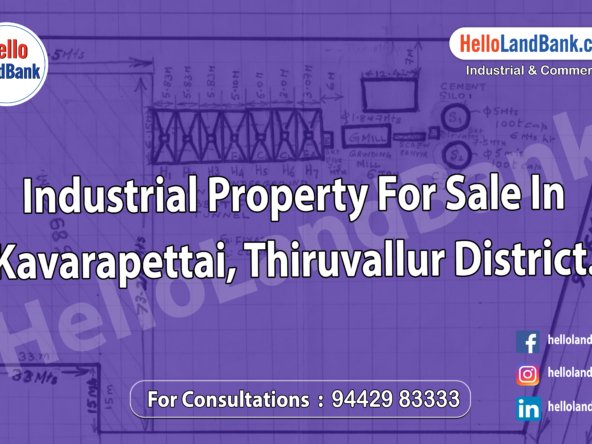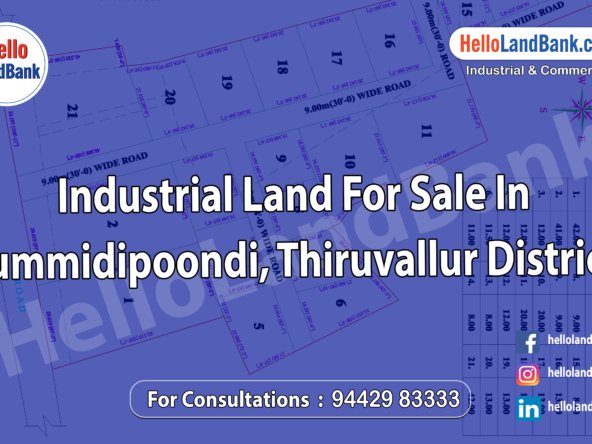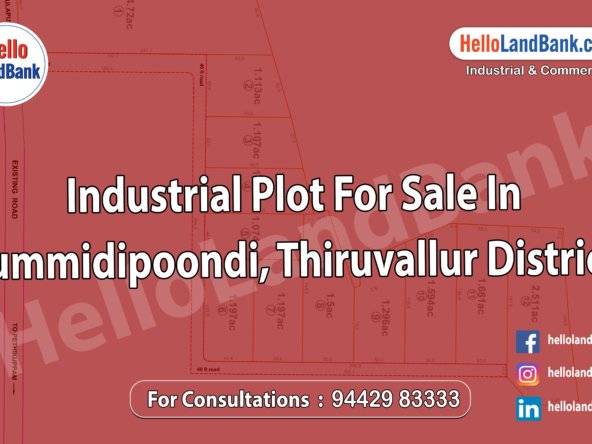Zoning laws applicable to industrial land govern the permissible land uses, development standards, and regulatory requirements for industrial properties within designated zoning districts. Zoning regulations vary depending on the jurisdiction and can include a combination of local zoning ordinances, comprehensive plans, zoning maps, and land use regulations. Here are some common zoning laws applicable to industrial land:
1. Zoning Districts:
- Industrial land is typically located within specific zoning districts or zones designated for industrial use.
- Zoning districts may include categories such as Industrial (I), Manufacturing (M), Industrial Park (IP), Heavy Industrial (HI), Light Industrial (LI), or Special Industrial (SI) zones, depending on the intensity of industrial activities permitted.
2. Permissible Land Uses:
- Zoning laws specify the types of land uses allowed within industrial zones, including manufacturing, warehousing, distribution, assembly, research and development (R&D), logistics, storage, processing, and other industrial activities.
- Permissible land uses may vary depending on the zoning district and may require conditional use permits or special approvals for certain activities.
3. Building Height and Setbacks:
- Zoning regulations establish building height limits, setback requirements, and bulk standards for industrial developments to ensure compatibility with neighboring properties, public safety, and aesthetic considerations.
- Height restrictions and setback requirements help mitigate visual impacts, maintain privacy, and protect surrounding properties from adverse effects such as shadowing, noise, and visual intrusion.
4. Lot Coverage and Floor Area Ratio:
- Zoning laws regulate lot coverage and floor area ratio (FAR) to control the intensity and density of development on industrial land.
- Lot coverage limits the percentage of a lot that can be covered by buildings and structures, while FAR limits the total floor area that can be developed relative to the size of the lot.
- These standards help manage congestion, preserve open space, and maintain a balance between development and environmental protection.
5. Parking and Loading Requirements:
- Zoning ordinances establish parking and loading requirements for industrial developments to accommodate employee parking, customer parking, and vehicle circulation needs.
- Parking standards specify the number of parking spaces required based on the size, type, and use of industrial facilities, while loading requirements address the design and location of loading areas, truck docks, and vehicle access points.
6. Landscaping and Buffering:
- Zoning regulations may require landscaping, buffering, and screening measures to mitigate visual impacts, enhance aesthetics, and provide separation between industrial properties and adjacent land uses.
- Landscape requirements may include the installation of green buffers, landscape buffers, vegetative screening, berms, fences, or other landscaping features to soften the visual appearance of industrial developments and improve compatibility with surrounding land uses.
7. Signage and Lighting:
- Zoning laws regulate signage and lighting standards for industrial properties to ensure visibility, safety, and compliance with local sign ordinances.
- Sign regulations specify the size, height, location, design, and illumination of signs used for identification, wayfinding, advertising, and branding purposes.
- Lighting standards address outdoor lighting design, fixture types, light levels, and glare control to minimize light pollution, enhance security, and promote nighttime visibility while minimizing impacts on neighboring properties.
8. Environmental Regulations:
- Zoning laws may incorporate environmental regulations, performance standards, and land use controls to address environmental impacts associated with industrial activities.
- Environmental regulations may include setback requirements from environmentally sensitive areas, pollution prevention measures, stormwater management requirements, and restrictions on hazardous materials handling to protect public health, safety, and natural resources.
9. Special Permitting and Review Processes:
- Zoning ordinances may require special permitting, conditional use permits, or discretionary review processes for certain industrial activities with potential impacts on the surrounding environment, community character, or public welfare.
- Special permitting processes may involve public hearings, environmental assessments, traffic studies, and stakeholder consultations to evaluate project impacts, assess mitigation measures, and determine compatibility with zoning objectives.
10. Zoning Compliance and Enforcement:
- Zoning laws are enforced by local zoning officials, building inspectors, and planning departments responsible for administering and enforcing zoning regulations.
- Developers, property owners, and industrial users are required to obtain zoning approvals, permits, and clearances before commencing development activities and must comply with zoning requirements throughout the project lifecycle. Non-compliance with zoning laws may result in enforcement actions, penalties, fines, or legal consequences.
By understanding and adhering to applicable zoning laws, industrial land developers can navigate regulatory requirements, obtain necessary approvals, and ensure compliance with zoning regulations to facilitate successful industrial land development projects while promoting orderly land use, protecting public welfare, and preserving community character.




